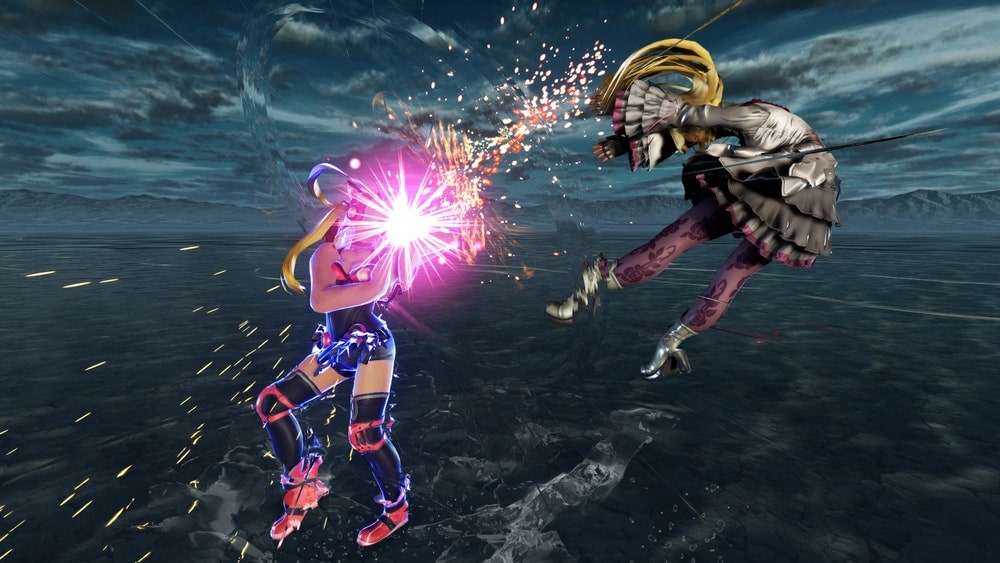
Playing video games at 1440p at 144Hz is something that every gamer strives for nowadays. However, this requires a lot of powerful, expensive hardware to achieve.
In contrast, the next best standard, 1080p 144Hz can be achieved more easily. 1080p is still a relatively high resolution and when combined with the ultra-smoothness of 144 FPS, should make for very enjoyable gaming experiences.
What’s the best GPU for 1080p 144Hz Gaming?
In this blog post, I've reviewed a variety of graphics cards/GPUs in different price ranges that can help you hit 144Hz at 1080p, especially when it comes to e-sports titles like Fortnite or Overwatch. I've covered everything from ‘cheaper’ cards to premium ones that might even be a tad overkill for what we need.
Contents
The Specs:
About the NVIDIA GeForce GTX 1660 Chip:
Note: If you’re confused by the technical terms mentioned above, have a quick peek at the buying guide below before you continue.
This GTX 1660 graphics card from Asus offers up 6GB of GDDR6 Video-RAM. This means that it either meets or surpasses the minimum system requirements for a lot of modern games, including DOOM Eternal. 6GB seems to be enough memory to support a lot of open-world games, especially ones that were released in the last couple of years.
The Asus GTX 1600 Super OC features Auto-Extreme Technology which refers to an automated manufacturing process. It cuts down on the thermal strain on components and produces a more reliable product overall.
The graphics card is made out of an aerospace-grade alloy which means that you’d have to try hard to damage it.
If you’re not quite hitting 1080p 144Hz with some of the latest games, then you can resort to overclocking this GPU. Asus’ proprietary GPU Tweak II software allows you to optimize conditions for overclocking, giving you control of parameters like core clocks, memory frequency, and voltage settings.
You also have full control of the fans, allowing you to manage the temperature while you push the performance of the graphics card.
With this GTX 1080, 144Hz should be a fairly easy thing to achieve, especially with e-sports titles like PUB G.
Pros:
Cons:
The Specs:
About the AMD Radeon RX Vega 56 Chip:
The RX Vega 56 comes with 8GB of V-RAM, thus offering more capacity than the cheaper GTX 1660. This makes the former a little bit more future-proof than the latter, especially with Triple-A titles like Cyberpunk 2077 on the horizon.
This graphics card is made out of military-grade components and feels quite sturdy in your hand. It's supposedly quite heat-tolerant which is good news if you want to overclock it.
Overclocking this graphics card is quite easy, thanks to the MSI Afterburner technology. Similar to Asus' GPU Tweak II, Afterburner provides an easy interface for tweaking parameters such as core performance and voltage. Also, you can set up fan profiles and do benchmarking tests to see if you're hitting 144Hz in the game.
The GPU comes with an enormous number of Shading Units and Texture Mapping Units which means that it can render detailed graphics and textures.
Pros:
Cons:
The Specs:
About the Radeon RX 580 Chip:
Can RX 580 run 144hz?
This RX 580 graphics card from Sapphire is the cheapest on this list but it's still capable of delivering a 144Hz performance at 1080p in certain games. For instance, if you try playing Overwatch with this GPU, you can maintain a higher frame rate than 144Hz if you have the settings set to 1080p on Medium. You won't experience any stuttering either.
The Sapphire RX 580 comes with a software called Intelligent Fan Control III which automatically optimizes fan performance. For instance, if you're doing very light work on your PC (like listening to music) the fans will be shut down. They'll only be started again if you boot up a game or a large application.
Pros:
Cons:
The Specs:
About the GeForce RTX 2060 Chip:
This Gigabyte RTX 2060 Windforce OC is a powerful mid-tier graphics card. First of all, it offers 8GB of V-RAM which is more than enough for e-sports titles and is what's recommended for the latest Triple-A titles.
The high amount of Shading Units and TMUs comes in handy when playing graphics-intensive games like Red Dead Redemption II. Textures and objects load up quite fast with this GPU.
This Graphics card features NVIDIA's Real Time Ray Tracing technology which allows for ultra-realistic light and shadow rendering in video games. Ray tracing is used in a lot of major TV and Movie productions when there's CGI involved.
While this might not make much of a difference when you're playing games like Fortnite, more detailed games like Red Dead Redemption takes full advantage of this technology, rendering out breathtaking landscapes that make you want to stop and admire for a while.
Lastly, the Gigabyte RTX 2060 comes with two 100mm fans which spin in opposite directions to each other. This leads to better heat dissipation, allowing you to game for hours on end.
Pros:
Cons:
The Specs:
About the GeForce RTX 2080 Chip:
The EVGA RTX 2080 is by far the most expensive graphics card on this list and it's overkill for what we need. But if you've got the budget for it and you want to play even the latest, most graphics-intensive games at 1080p, then it's a worthy investment.
First of all, it offers 8GB of GGDR6 V-RAM which means you'll be able to play a lot of the latest games without a problem.
Like the RTX 2060, the 2080 also comes with ray tracing. Combine that with the higher Shading Unit and TMU count and you get treated to some beautiful, life-like visuals in games.
In addition to ray-tracing, this graphics card comes with EVGA's Precision X1 software which allows for fast and easy overclocking (not that you'd need to with most games). With overclocking, you could even push into the 1440p 144Hz territory with certain games.
The RTX 2080 is by far the best GPU for 1080p 60fps on this list.
Pros:
Cons:
The Specs:
About the GeForce RTX 2080 Chip:
The XFX RX 5700 is a graphics card that places a lot of stress on durability. Its thermals are nothing short of excellent. It's got a larger heat sink than most cards out there, which means faster heat dissipation. In addition, this graphics card is fitted with three fans, making sure that the heat is blown out quickly during stressful performances.
The downside is that it does take up a lot of space as a result.
One of the things I liked most about the XFX RX 5700 is the Fidelity FX software that it comes with. Without getting into too much technical detail, it's essentially a technology that can sharpen up game graphics without impacting the performance of the GPU.
This graphics card comes with 8GB of V-RAM which means you should be able to install and play the latest games. Thanks to its high Shading Unit and Text Mapping Unit count, it should also render beautiful, detailed graphics as well.
If you want more power and you don’t mind spending a bit extra, then the 5700 XT version of this graphics card exists. It’s significantly faster with a boost clock speed of 1905MHz.
Pros:
Cons:
If we’re going by performance alone, I would say the best video card for 1080p gaming is the EVGA GeForce RTX 2080 by far. It offers up enough V-RAM for modern games, a high Shading Unit, and TMU count has ray-tracing and is easy to overclock. However, it is fairly pricy; significantly more so than the other graphics cards on this list.
If your budget is a bit limited then I'd recommend the Gigabyte GeForce RTX 2060 instead.
Shopping for graphics cards is something a lot of people struggle with. This is either because there are a ton of options out there or they aren’t sure how to pick one that suits their needs perfectly. That’s why I’ve put up this simple buying guide.
In this section, I’m going to be breaking down what technical factors you should pay attention to when buying a graphics card:
I've thrown this term around a lot in this blog post but what exactly does this mean? V-RAM refers to the temporary memory of a video/graphics card. Before displaying graphics on the screen, they're first read by the processor and written into a V-RAM. Then the data is retrieved from the V-RAM, converted into an analog signal by a digital-to-analog converter, and finally sent off to the display.
Complicated graphics, like the kind you find in modern video games, contain a lot of data. Hence, you need a lot of memory space to render them. That's why a lot of game developers these days recommend having 8GB of V-RAM.
Clock speeds indicate how fast a graphics card can execute a task. Base clock speed refers to the typical speed of its cores while 'boost' clock speed tells you the theoretical maximum it can reach. Typically, graphics cards are pushed towards their boost clock speeds when you load up a video game or another processor-intensive application.
When buying a graphics card for 144Hz Monitors, make sure that it has a relatively high boost speed, that’ll allow it to hit that frame rate easily.
What is overclocking?
Overclocking is the process of pushing your GPU beyond its boost clock speed to get better performance (i.e. more frame rates at higher resolutions). Before you overclock you need to optimize certain factors in the PC environment like internal temperature and voltage. Certain graphics cards like the EVGA RTX 2080 and the MSI Radeon RX Vega 56 Air Boost come with software that makes overclocking extremely easy.
Cooling is important if you’re the type of person that likes to play games for hours on end. Having a proper cooling system allows your graphics card to prevent its components from overheating. The XFX RX 5700 is a great example of a card with excellent thermals, because of its three fans and extra-large heat sink.
Graphics cards are connected to the motherboard via PCIe ports. These ports come in a variety of different sizes like x16, x8, x4, and so on.
Before you buy a graphics card, you need to make sure that your motherboard has the right size and port to support it. For instance while all the graphics cards on this list require a 3.0 x16 port, the XFX RX 5700 specifically needs a 4.0 port, which is the newer standard.
GPUs come with 'shaders', which are responsible for producing a variety of effects on 2D and 3D objects or textures. These effects can include lighting, saturation, brightness, hue, distortion, and blue. A lot of games these days have a tremendous amount of detail and nuance to them. Hence they require GPUs with a lot of shading units to render images.
Simply put, the greater the number of shading units a GPU has, the greater its ability to render realistic graphics.
Games make use of textures to generate realistic landscapes from beaches to dense forests. Texture Mapping Units (TMUs) are the components that apply these textures and appropriate behaviours to every pixel that's rendered on your screen. So not only do TMUs help form the look of each 3D object but it also ensures that they behave like the real thing (i.e. water splashing and rippling when you jump in).
The TMU count doesn't correspond with the quality of the textures but rather how soon they're loaded. So the higher the count, the faster these textures are rendered in the game.
